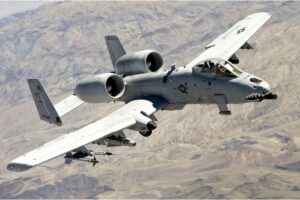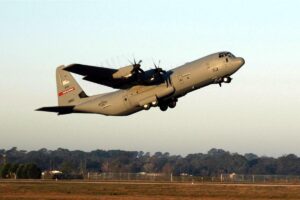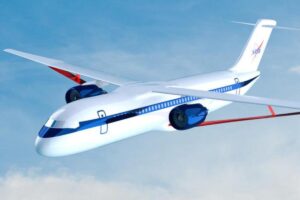1553 to SERIAL Converters for Enhanced Compatibility
- Introduction
- Overview of MIL-STD-1553 Protocol
- Understanding SERIAL Interfaces
- The Need for 1553 to SERIAL Conversion
- Conversion Principles and Mechanisms
- Types of SERIAL Interfaces Supported
- Key Benefits of 1553 to SERIAL Converters
- Design Considerations
- Integration in Avionics and Defense Systems
- Comparison with Other Conversion Technologies
- Compliance with Aerospace Standards
- Common Use Cases
- Implementation Challenges and Solutions
- Future Trends in Data Conversion
- Conclusion
In aerospace and defense sectors, data integrity and system compatibility are mission-critical. As systems evolve, a common challenge arises—integrating legacy MIL-STD-1553 communication buses with modern or alternate data interfaces such as RS-232, RS-422, or RS-485. This white paper explores how 1553 to SERIAL converters play a pivotal role in bridging this gap, ensuring seamless communication between disparate components.
MIL-STD-1553 is a robust, time-deterministic serial data bus standard originally developed for military avionics. Operating at 1 Mbps, it supports multiple remote terminals (RTs), bus controllers (BCs), and bus monitors (BMs). Key features include:
- Dual-redundant buses for fault tolerance
- Command/response communication protocol
- Deterministic message timing
- Transformer-coupled stub connections
MIL-STD-1553’s deterministic behavior and high reliability make it ideal for mission-critical systems in aircraft, spacecraft, and naval platforms.
Serial interfaces refer to standards where data is transmitted one bit at a time over a single channel. Common variants include:
- RS-232: Point-to-point communication over short distances, typically used in legacy computer systems.
- RS-422: Offers higher speed and longer range than RS-232, supporting differential signaling.
- RS-485: Supports multipoint systems, commonly used in industrial and embedded networks.
These SERIAL interfaces are lightweight and well-suited for low-bandwidth, asynchronous communication.
MIL-STD-1553 and SERIAL protocols differ significantly in signaling methods, data rates, and protocol structure. However, systems often require interoperability for:
- Upgrading legacy equipment with modern interfaces
- Integrating COTS (Commercial Off-The-Shelf) devices
- Enabling telemetry and maintenance data extraction
- Reducing system complexity and cost
Converters enable a MIL-STD-1553-based avionics subsystem to communicate with equipment using SERIAL protocols, thereby extending system capabilities.
1553 to SERIAL converters function as protocol bridges. The conversion process typically includes:
- Message Parsing: Decoding 1553 command and status words
- Data Mapping: Translating 1553 word structures into serial byte streams
- Buffering: Managing timing differences between synchronous and asynchronous buses
- Flow Control: Using handshaking protocols to prevent data loss
Some converters also offer programmable logic for customizable message filtering and data formatting.
Modern converters support a wide range of serial interfaces to accommodate diverse applications:
- RS-232: Ideal for connecting with laptops or terminal emulators
- RS-422/RS-485: Preferred in embedded and industrial applications due to noise immunity and multi-drop capabilities
- UART Interfaces: Integrated into microcontrollers for embedded systems
- USB-to-Serial Adapters: Enable PC-based data monitoring and logging
Multi-interface converters provide versatility in field deployments and testing environments.
These converters offer several operational advantages:
- Interoperability: Seamless data exchange between dissimilar systems
- Legacy Integration: Preserve investment in existing 1553 infrastructure
- Data Logging: Facilitate external diagnostics and black-box recording
- Maintenance and Testing: Enable bench-top simulation and debugging
- Cost Efficiency: Reduce need for custom interface development
By supporting diverse applications, converters enhance mission flexibility and reduce integration time.
Designing a reliable 1553 to SERIAL converter involves multiple factors:
- Isolation: Electrical isolation protects against voltage spikes and ground loops
- Speed Matching: Adapting 1553’s synchronous data to asynchronous SERIAL timing
- Buffer Size: Adequate buffering prevents data overrun or underrun
- Protocol Handling: Mapping control/status words accurately to SERIAL format
- Power Supply Compatibility: Support for 28V DC aircraft power or USB power
- Environmental Hardening: MIL-STD-810 compliance for shock, vibration, and temperature extremes
Converters are deployed across diverse platforms:
- Aircraft: Interface onboard diagnostics with ground support equipment
- Missile Systems: Link guidance modules to telemetry receivers
- Unmanned Aerial Vehicles (UAVs): Simplify data interfacing in constrained payload environments
- Naval Vessels: Extend legacy 1553 systems with modern command-and-control terminals
- Ground Test Equipment: Allow PC-based software to emulate or monitor 1553 traffic
This integration allows mixed-technology systems to operate cohesively.
Other technologies exist for bridging MIL-STD-1553 systems, including:
- 1553-to-ARINC Converters: Used in civil/military avionics integrations
- 1553-to-Ethernet Gateways: Facilitate high-speed, long-distance networking
- Software Emulation: Host-based solutions with USB or PCIe interfaces
However, 1553 to SERIAL converters provide a compact, cost-effective solution for low-bandwidth applications where full protocol support is unnecessary.
For aerospace deployment, compliance with the following standards is critical:
- MIL-STD-1553: Communication protocol compatibility
- MIL-STD-704: Power supply standards
- MIL-STD-461: Electromagnetic interference and emissions
- DO-160G: Environmental conditions and testing
- RTCA DO-254: Assurance of airborne electronic hardware
Meeting these standards ensures airworthiness and operational reliability.
Real-world applications highlight the versatility of these converters:
- Aircraft Maintenance Terminals: Technicians access flight data via RS-232-enabled laptops
- Embedded Control Units: Use RS-485 links to exchange control data with MIL-STD-1553 subsystems
- Flight Data Recorders: Receive formatted data from 1553 bus for storage and retrieval
- Portable Test Equipment: Engineers test bus behavior in lab or field environments
- Vehicle Health Monitoring Systems: Extract diagnostic codes via serial communication
Such use cases demonstrate the widespread applicability in both airborne and ground-based systems.
Several technical challenges may arise:
- Protocol Translation Complexity: Mapping 1553 command/status structure into simple byte streams requires smart design
- Timing Mismatches: Asynchronous SERIAL interfaces must not overrun real-time 1553 data
- Noise Susceptibility: Serial links, especially RS-232, are vulnerable to EMI without proper shielding
Solutions include:
- Embedded microcontroller/DSP-based parsing engines
- Hardware FIFOs for buffering
- Galvanic isolation and differential signaling for noise immunity
Looking forward, the evolution of 1553 to SERIAL conversion includes:
- Smaller Form Factors: Miniaturization for UAVs and CubeSats
- Software-Defined Interfaces: Dynamic configuration via software
- Integrated Security: Authentication and encryption to protect data
- Hybrid Gateways: Supporting multiple protocols in a single device
- Cloud Integration: Real-time data streaming to secure cloud servers via serial-to-IP bridges
These advancements ensure ongoing relevance in modern and future aerospace architectures.
1553 to SERIAL converters are essential tools for ensuring compatibility between military-grade MIL-STD-1553 systems and widely used serial interfaces. They offer flexibility, reliability, and cost-effectiveness for a range of integration scenarios. As aerospace systems continue to evolve, these converters will remain critical to enabling interoperability, prolonging the life of legacy systems, and ensuring seamless communication across diverse platforms.





